LED lighting beneficial for the developing world
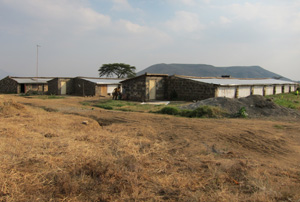
Energy is a major cost factor in poultry production. This holds particularly true for the developing world. A field study with various lighting sources indicated that LED lighting is a very effective alternative. Broilers are performing well and the investment is affordable.
By Jennifer Tracy , International Finance Corporation, Nairobi, Kenya and Evan Mills, Lawrence Berkeley National Laboratory, University of California, USA
The highly constrained access to grid-based electricity in the developing world results in the widespread use of kerosene to provide illumination in poultry production. An experimental study, the “Lumina Project”, assessed the comparative energy cost and meat yields of raising broilers with three types of off-grid lighting alternatives in poultry farming in East Africa: kerosene lanterns, solar/wind-powered fluorescent lighting, and commercially-available solar-powered LED lighting systems.
Chickens in this part of the world are raised in houses that are lit for between 20 and 24 hours per day throughout the growth cycle, which typically lasts 35 days. This of course requires the use of artificial lighting during the evening hours.
Many small farms
In Kenya, broiler chickens are produced in a large number of relatively small farms, contributing to the incomes of three million people and indirectly supporting the livelihoods of many more, while producing 0.7% of Kenya’s total GDP. As of 2006, there were nearly 27,000 broiler farms in Kenya.
In Kenya, broiler chickens are produced in a large number of relatively small farms, contributing to the incomes of three million people and indirectly supporting the livelihoods of many more, while producing 0.7% of Kenya’s total GDP. As of 2006, there were nearly 27,000 broiler farms in Kenya.
Although there is great potential for growth in poultry production given increasing protein consumption in Kenya, there has been little gain over the last several years. Slow growth is in part attributed to the increased cost of inputs. Between 2006 and 2010, the cost of production rose by more than 200%, from 1.9 billion Kenya shillings (Ksh) (22.2 million USD) to 4.3 billion Ksh (50.3 million USD), far faster than profits. Dependency on costly and inefficient kerosene fuels contributes to this problem.
Field demonstration for alternatives
At the study farm located in the town of Maai Mahiu, flocks of 3,000 chickens were grown in each of three identical houses (280 m2 each) under kerosene, fluorescent, and LED lighting configurations. A baseline yearly expenditure of 1,200 USD was historically required to illuminate the three houses with kerosene. The capital costs of the baseline and alternative systems (inclusive of wiring, lamps, and installation) are shown in Table 1. While the LED lights have greater luminous efficacy than the fluorescent system, their primary advantage is the delivery of more light to the floor of the houses.
At the study farm located in the town of Maai Mahiu, flocks of 3,000 chickens were grown in each of three identical houses (280 m2 each) under kerosene, fluorescent, and LED lighting configurations. A baseline yearly expenditure of 1,200 USD was historically required to illuminate the three houses with kerosene. The capital costs of the baseline and alternative systems (inclusive of wiring, lamps, and installation) are shown in Table 1. While the LED lights have greater luminous efficacy than the fluorescent system, their primary advantage is the delivery of more light to the floor of the houses.
In contrast, the fluorescent and kerosene lighting sources emit light spherically, with much going onto the ceiling and high wall areas where it is not of use. As a result, the LED system provided approximately twice the illumination to the chicken-production area with less than half the energy input. The kerosene-lit house received by far the least amount of illumination (ranging from 0.1 to 0.3 lux), the fluorescent-lit house was intermediate (0.2 to 5.0 lux), while the LED-lit house received the highest levels (0.3 to 6.8 lux). The LED-lit house also attained the most uniform light distribution.
Consistent performance
LED lighting was the clear favourite from the perspective of the caretakers and the farm owner. The LED lights delivered the most light, had the most consistent performance, were the easiest to manage, and were the most convenient to operate.
LED lighting was the clear favourite from the perspective of the caretakers and the farm owner. The LED lights delivered the most light, had the most consistent performance, were the easiest to manage, and were the most convenient to operate.
Neither the growth rate of the chickens nor the rate of food consumption varied significantly among the three houses (Table 2). This was a surprising outcome given the significant reduction in lighting duration in the fluorescent-lit house during an extended overcast period when the solar system was unable to perform. Bird mortality was higher in the kerosene-lit house, but this was attributed to an outbreak of Gumboro disease, independent of the lighting choices.
In terms of operational energy expenses, LED lighting was by far the most cost-effective. On a per-cycle basis, the fluorescent and the LED systems increased net income by 15% compared to the kerosene system. Considering the initial cost of each of the lighting systems and assuming five production cycles per year, the LED system will pay for itself in 1.5 years while the fluorescent system will take 9.3 years. A higher number of cycles would decrease the pay back times proportionately.
The differential cost-effectiveness between the LED and fluorescent or kerosene systems would be even greater if the fluorescent system were upsized to provide the same light as the LED system. The same would hold true were the LED systems downsized, which is probably a more optimal approach given that the LED provided higher illuminance levels than are generally regarded as necessary (~20 lux during brooding, reduced to 1-5 lux after brooding).
Providing light with grid-independent fluorescent or LED systems is also far more economical than connecting to the electricity grid. The estimated grid-connection cost at this facility (which is located close to a nearby electricity distribution line) is 1.7 million Ksh (approx 21,250 USD), which is nearly six-times the cost of the fluorescent system and 35-times the cost of the LED system.
Less carbon dioxide
In addition to cost savings, switching to the LED system avoids over one metric tonne of carbon dioxide emissions per house on an annual basis compared to kerosene. Our discovery that weight gain did not slow in the solar-fluorescent-lit house after it experienced extended lighting outages beginning on day 14 of the 35-day study suggests that conventional farming practices in Kenyan broiler operations may call for more hours of lighting than is needed to achieve the required yields. Practices in the industrialised world typically dictate fewer hours of illumination than provided by the LED configuration tested in this study, suggesting yet another way to trim energy use and lighting capital costs.
In addition to cost savings, switching to the LED system avoids over one metric tonne of carbon dioxide emissions per house on an annual basis compared to kerosene. Our discovery that weight gain did not slow in the solar-fluorescent-lit house after it experienced extended lighting outages beginning on day 14 of the 35-day study suggests that conventional farming practices in Kenyan broiler operations may call for more hours of lighting than is needed to achieve the required yields. Practices in the industrialised world typically dictate fewer hours of illumination than provided by the LED configuration tested in this study, suggesting yet another way to trim energy use and lighting capital costs.
MORE INFORMATION
Multiple benefits In addition to energy savings, multiple benefits of the LED system compared to the other lighting approaches were identified in the Kenya experiment: 1. Unlike the fluorescent system, the low-voltage LED system did not require a skilled electrician for installation or maintenance, and due to their modular design can be more easily tailored to varying scales of production. 2. Throughout the growing cycle the caretaker was readily able to reposition the lights based on the desirable placement, unlike the permanently fixed fluorescent lamps. 3. In comparison to the other lighting systems, the caretaker of the kerosene-lit house had to devote more time to obtaining fuel, preparing the kerosene lanterns, and cleaning the accumulated soot from the glass chimneys on a daily basis. 4. As a result of an undersized solar-wind fluorescent system and 15 days of minimal sun, the duration of light output in the fluorescent-lit house was reduced by nearly 40% compared to the duration intended. Under the same solar conditions, the LED system, on the other hand, never failed prematurely and provided the intended duration of light output consistently throughout the entire cycle, as did the kerosene lanterns, which were simply refilled when necessary. 5. Because they experienced more uniform lighting distribution than the houses lit by the other light sources, the chickens in the LED-lit house distributed themselves more evenly during feeding, reducing stress among the birds. |
Join 31,000+ subscribers
Subscribe to our newsletter to stay updated about all the need-to-know content in the poultry sector, three times a week. Beheer
Beheer

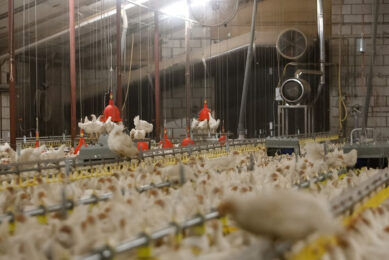
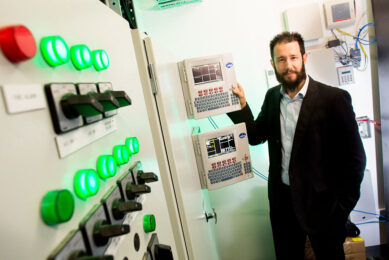
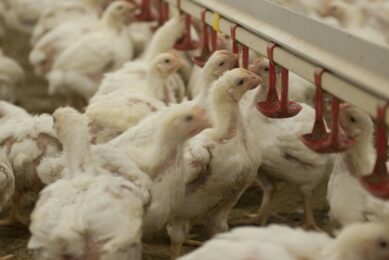
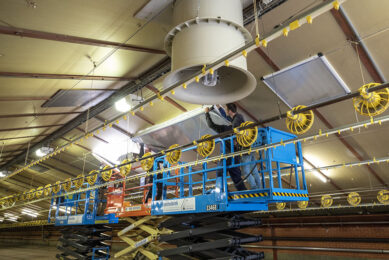



 WP Admin
WP Admin  Bewerk bericht
Bewerk bericht